Injection-moulding-PP – Chemical Recycling 09-07-2022 - Arhive
Injection-moulding-PP – Chemical Recycling
-ALPLA acguired Polish packaging producer Apon
ALPLA Group (Hard, Austria) is boosting the presence of its pharma division in Central and Eastern Europe (CEE) with the acquisition of the Polish company APON, said Chemengonline.
APON produces plastic packaging for the pharma industry at its site in Zyrardow near Warsaw. The acquisition continues the growth and expansion course of the ALPLApharma business division established in 2019.
Bottles, containers, caps, dosage systems and accessories in certified clean-room quality – ALPLA has been producing plastic packaging for pharma products since 2016.
The rapidly growing segment was consolidated under the brand ALPLApharma in 2019 and has been gradually expanded. ALPLA is continuing this expansionary course with the acquisition of the Polish company APON. ‘We are increasing our presence in Central and Eastern Europe and are providing the emerging market in Poland and the Baltic states with high-quality products right there in the region,’ explains Walter Knes, Managing Director, ALPLApharma. Injection-moulding-PP – Chemical Recycling
APON was founded as a family business in 1985. Its workforce of approximately 45 at the site in Zyrardow near Warsaw currently produces bottles with fill volumes of 5 to 100 milliliters, containers with screw caps or snap lids and medical accessories with dosage aids. The pharmaceutical primary packaging is produced in a clean room in accordance with ISO 15378.
The company also produces packaging for food supplements and for the e-liquid sector. The plastics used as packaging materials are HDPE, LDPE, PP and PET. It has a total annual production of over 200 million units. Its integration into the ALPLA Group is beneficial for both parties – in addition to the development of new markets, it will allow for access to technological expertise and packaging innovations. All of the APON staff will be kept on.
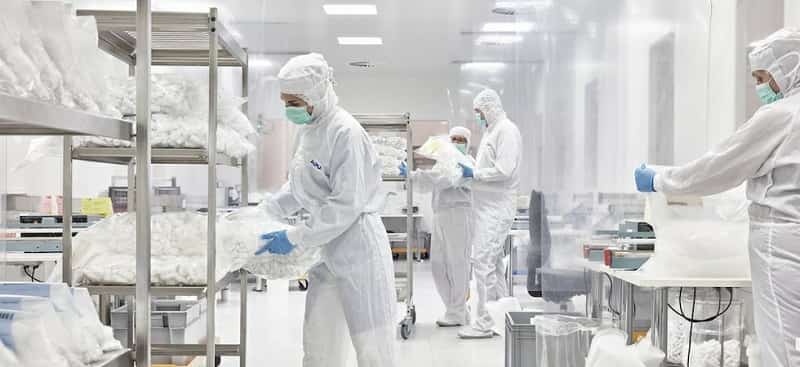
-EIA estimates show a decrease in global surplus crude oil production capacity in 2022
he EIA’s new report, titled Global Surplus Crude Oil Production Capacity, provides estimates of global surplus crude oil production capacity in both OPEC countries and non-OPEC countries, said Hydrocarbonprocessing.
Preliminary estimates for these data show that, as of May 2022, surplus capacity in non-OPEC countries decreased by 80% compared with 2021. The data show that, in 2021, 1.4 MMbpd of surplus production capacity was available in non-OPEC countries, about 60% of which was in Russia. Injection-moulding-PP – Chemical Recycling
As of May 2022, we estimate that all surplus production capacity in Russia was eliminated due to the sanctions implemented after Russia’s full-scale invasion of Ukraine. We determined that excess oil production capacity declined in other non-OPEC producing countries as well. We estimate that, as of May 2022, producers in non-OPEC countries had about 280,000 bpd of surplus production capacity.
We define surplus capacity as the maximum existing capacity that can be brought online within 30 days and sustained for at least 90 days. Our assessment of surplus crude oil production capacity does not include volumes of oil that are offline because of unplanned outages and disruptions, including sanctions, because these volumes cannot be brought to market voluntarily. For that reason, we exclude crude oil production that is offline in Iran, Libya, Venezuela, and now Russia, from surplus capacity estimates.
Since 2003, we have tracked OPEC surplus capacity in a separate publication: the Short-Term Energy Outlook (STEO). Global Surplus Crude Oil Production Capacity includes information about surplus production capacity located in both OPEC and non-OPEC member countries, based on STEO data. Our estimates of global surplus crude oil production capacity now date back to 1970 and provide a longer history of this measure. We define OPEC in terms of its current membership.
In our June STEO, we estimate that OPEC surplus capacity declined to 3.0 million b/d by May 2022 from 5.4 million b/d in 2021. As a result of the declines of surplus production capacity located in both OPEC and non-OPEC countries, global surplus crude oil production capacity in May 2022 was less than half of its 2021 average.
We remind, more than 5 MM barrels of oil that were part of a historic U.S. emergency reserves release to lower domestic fuel prices were exported to Europe and Asia last month, according to data and sources, even as U.S. gasoline and diesel prices hit record highs. Injection-moulding-PP – Chemical Recycling
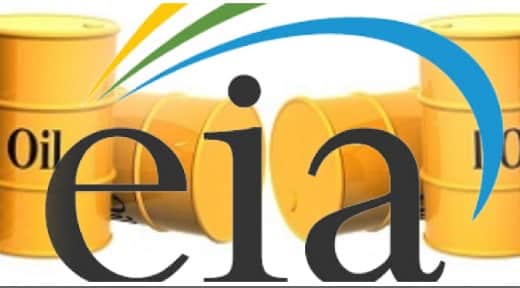
-10 Myths about Chemical Recycling
Recently, the Federación Empresarial de la Industria Química Española (Feique), together with the Instituto Tecnológico del Plástico (Aimplas) and Plastics Europe, have published the first report that analyses the situation and degree of implementation of chemical recycling in Spain and a prospective for the future of this technology.
This study provides an overview of the present and future of the chemical recycling industry and its potential contribution to the circular economy. It shows both sides of these technologies, their potential and the challenges we face in making chemical recycling a reality. Injection-moulding-PP – Chemical Recycling
Despite the advances that science has made in chemical recycling, the concepts and ideas associated with these technologies still contain numerous myths.
The report has dedicated a section to the 10 myths that currently exist around chemical recycling.
Do ou want to know what those myths are?
Myth 1: “Chemical recycling is not recycling, it is energy recovery”
False. These are two different concepts even if both involve breaking the polymer chain. Chemical recycling, from the point of view of the waste hierarchy, is above energy recovery and results in circular raw materials.
Myth 2: “Chemical recycling will replace mechanical recycling in the short term”
False. Chemical recycling complements mechanical recycling, it does not replace it. Mechanical recycling should be chosen whenever possible, but when starting from waste highly mixed or contaminated, chemical recycling should be chosen.
Myth 3: “Chemical recycling is a polluting process that releases toxic substances into the environment”
False. Chemical recycling includes a wide variety of chemical processes that are regulated to control their impact on the environment. Legislation regulates these processes, ensuring that their impact is minimized providing an overall reduction of the environmental footprint. Injection-moulding-PP – Chemical Recycling
Myth 4: “Chemical recycling has a high carbon footprint”
False. Comparing a manufacturing process of raw materials from chemical recycling with the manufacturing process from a virgin raw material, the carbon footprint decreases.
Myth 5: “Chemical recycling is not a reality on an industrial scale”
False. There are already products on the market that incorporate plastics obtained from chemical recycling. There are plants with different chemical recycling processes that treat tons of waste per year.
Myth 6: “Chemical recycling is a technology with high greenhouse gas (GHG) emissions”
False. Chemical recycling can prevent incineration of plastics and can be used as raw material, avoiding exploration refining, and reducing GHG emissions, which throws a favorable balance of emissions. There are many scientific studies showing the benefits of combining mechanical recycling and chemical recycling in terms of emissions.
Myth 7: “Chemically recycled plastic materials are not competitive with virgin plastic”
False. Chemically recycled plastic is a new material on the market and its price will depend on the demand. The competitiveness of recycled plastic compared to virgin plastic will be the sum of environmental and economic factors.
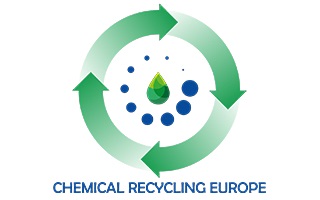
-Plastic Perspectives: 5 Questions for Dordan Manufacturing
The custom thermoformer’s Daniel Slavin, CEO and president, comments on industry issues including reshoring, inflation, and materials’ sourcing.
Woodstock, IL, the filming location of the Bill Murray movie Groundhog Day, is home to Dordan Manufacturing, a 60-year old a privately held, custom thermoforming company located 60 miles northwest of Chicago. Injection-moulding-PP – Chemical Recycling
The facility feels like a second home to Daniel Slavin, CEO and president, who grew up in the company, taking over when his father retired as did his father before him.
We made an on-site visit to the facility in 2019 and felt it was time to check-in with them again. We also sought Slavin’s input on several of the external pressures affecting plastic manufacturers in 2022 including supply chain delays an Woodstock, IL, the filming location of the Bill Murray movie Groundhog Day, is home to Dordan Manufacturing, a 60-year old a privately held, custom thermoforming company located 60 miles northwest of Chicago.
The facility feels like a second home to Daniel Slavin, CEO and president, who grew up in the company, taking over when his father retired as did his father before him.
We made an on-site visit to the facility in 2019 and felt it was time to check-in with them again. We also sought Slavin’s input on several of the external pressures affecting plastic manufacturers in 2022 including supply chain delays and inflationary pressures.
What’s new with Dordan?
Slavin: Over the last year, we’ve hired a new packaging engineer, quality control technician, and account executive to further support our design and quality control capabilities. This demand for talent is largely fueled by growth in our Medical Division following the completion of our in-house ISO Class 8 Cleanroom in 2019. While we still provide custom packaging to the retail and other consumer-facing markets, our growth strategy targets quality-centric industries that Dordan is well positioned to serve. To this end, we are pursuing ISO 13485 certification, a Quality Management System specific to medical device and component manufacturing. Injection-moulding-PP – Chemical Recycling
Slavin: The cleanroom is now manufacturing full-time and has a significant production backlog. We’ve been fortunate to attract some top-tier medical device companies, now producing at volumes we hadn’t anticipated in Year Three of our cleanroom operation. We are investigating purchasing additional equipment and continue to discover new ways of thinking about thermoform design, tooling, and manufacturing by working with our new customer base.
What production changes have been made since then?
Slavin: We retrofit one of our production lines to form and die cut in-line 0.125-inch-thick talc-filled UHMWPE for a dunnage tray/merchandising application. Most thin-gauge thermoformers can only convert material up to 0.080-inch thick. By pushing the limits of thermoforming, we manufactured a product not typical for inline thermoforming, saving our customer time and money.
What trends are you seeing in your markets?
Slavin: There is a consistent drumbeat to reshore items by either pulling out completely or as a dual source to transition offshore. It’s happening, but it’s not getting the attention that it has in the past. Considering China’s continuous lockdowns, I don’t see this reshoring trend declining.
From a materials perspective, there is constant tightening of the rPET market because bottlers—the largest users of PET—are purchasing more rPET to meet sustainability goals. This reduces the available supply of rPET to thermoformers, textiles, and other downstream buyers of this recovered resin. Thus, medium-sized manufacturers, like Dordan, are now competing with the bottle industry to secure material.
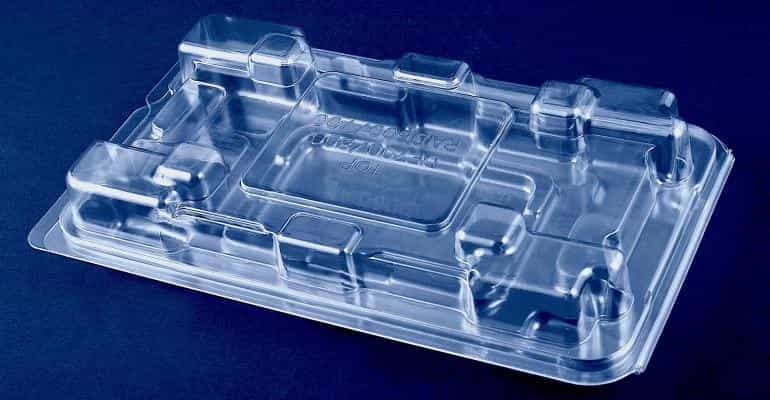
-The Future of Plastics recycling – Mechanical or Chemical?
- What is chemical or advanced plastic recycling?
- Does this mean the end of mechanical recycling?
Chemical or advanced plastic recycling has taken off in the last year, but will it replace the traditional mechanical recycling of plastic?
What is chemical or advanced plastic recycling?
The British Plastics Federation defines it as:
“Chemical recycling creates value in previously unrecyclable waste by breaking down these plastics into petrochemical feedstock, which can then be reused as building blocks for new virgin-quality polymers.” Injection-moulding-PP – Chemical Recycling
This means that hard-to-recycle plastics such as mixed post-consumer plastic waste streams based on PE(Polyethylene), PP(Polypropylene) and PS (Polystyrene) can be recycled when further sorting is not economical.
There are various technologies involved in chemical or advanced plastic recycling.
These include:
- A thermochemical process converts the plastic into pyrolysis oil – an example of this is BASF’s ChemCycling process
- The Hydro PRS system using water in a supercritical state that breaks down the polymers – ReNewELP are behind this technology
- Enzymes are used to break down the polymers – Carbios are one of the pioneers behind this system.
One of the advantages of chemical recycling is that it helps to ensure more plastic is recycled, which is especially important as oil-based sources for virgin polymers are expected to decline over the coming years.
With it estimated that less than 10% of the 370 million tonnes of plastics generated each year are recycled using traditional mechanical processes, new entrants are developing these technologies.
Major oil companies see chemical recycling to replace fossil-based virgin plastics with an equivalent quality raw material and a new source of revenue.
Petrochemical firms including Dow, Sabic and Chevron Phillips Chemical have all formed partnerships with recycling start-ups. Shell and ExxonMobil are also investing in this technology.
Investment in chemical recycling in Europe is expected to increase from an estimated €2.6 billion in 2025 to €7.5 billion by 2030.
While Europe, Middle Eastern and Asian countries are leading the way in developing chemical recycling technologies and commercial-scale plants, interest is also growing in the United States. Legislators in 18 states have passed laws to encourage chemical recycling.
One of the reasons that there is so much interest in chemical recycling is that major brands see it as a way to get virgin-equivalent recycled content. With plastics packaging taxes being introduced in some European countries and the UK (United Kingdom), this is a way to source recycled material that match the existing specification of fossil-based polymers.
Companies such as Coca-Cola, Unilever and Nestlé have invested in, agreed to purchase or partnered with chemical recycling technology providers.
Does this mean the end of mechanical recycling?
The potential of chemical recycling is huge. But there is still a strong future for traditional mechanical recycling that involves sorting, washing, and flaking or pelletising the plastics.
In a study of European plastics recyclers (who used traditional recycling methods), one quarter of respondents saw chemical recyclers as competitors for raw materials, but a larger 35% viewed it as a complementary technology. A majority were sceptical due to its ecological footprint, economic viability and especially the lack of commercial-scale facilities. Injection-moulding-PP – Chemical Recycling
This is due to the much larger energy requirements of chemical recycling plants compared to mechanical facilities.
However, a recent research paper on the climate impacts of these plastic recycling technologies and energy-from-waste, found that chemical recycling was only 7% more climate damaging than mechanical when the entire lifecycle was considered.
Compared to energy recovery, the climate change impact was 42% better. When looked at against producing 1 tonne of virgin grade LDPE, the climate impact of chemical recycling was 124% lower than producing it from these fossil fuel sources.
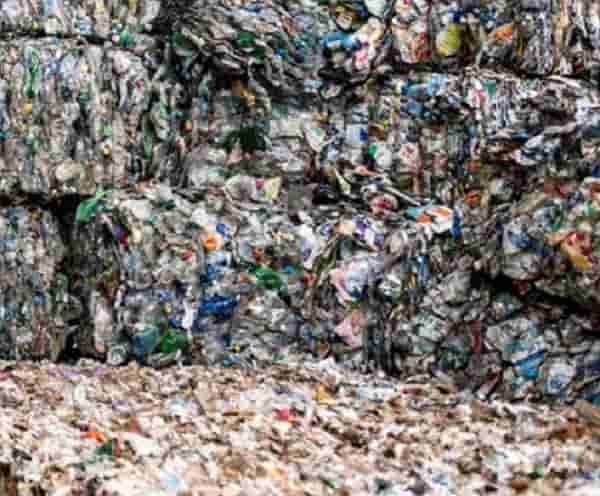
-Supplier launches new foam injection moulding PP compounds
The specialised PP compounds come in new mineral-reinforced grades
The back of an inner tailgate trim part foam injection moulded with SABIC’s PPc F9005 grade SABICPR577b Previous
SABIC has launched new PP compounds for foam injection moulding (FIM), providing, the supplier claimed, “both light weight and exceptional aesthetics for automotive interiors”.
The specialised range of PP compounds come in new mineral-reinforced grades which, the maker said, “can help deliver excellent aesthetics for visible automotive interior parts with complex geometries, such as door panels and trim, seat and trunk cladding, A/B/C/D pillar covers and centre consoles”. Injection-moulding-PP – Chemical Recycling
Unlike standard FIM materials, which typically exhibit surface defects, the new compounds have uniformly high surface quality similar to solid injection moulded parts. Compared to solid components, foamed parts made with such PP compounds offer significant weight savings that can help cut emissions. According to a cradle-to-grave life cycle assessment study (pending third-party review), the new materials can help OEMs lower carbon dioxide (CO2) emissions by as much as 15%.
“The automotive industry continues to look for new weight-out strategies that can advance energy efficiency and sustainability goals,” said Abdullah Al-Otaibi, general manager, ETP & market solutions, SABIC.
“Although foam injection moulding produces desirable lightweight parts, manufacturers have been forced to sacrifice aesthetics, until now.
We applied our extensive expertise in foaming technology to develop these new compounds to help resolve the issue of surface quality and open new application opportunities for foamed parts.” Injection-moulding-PP – Chemical Recycling
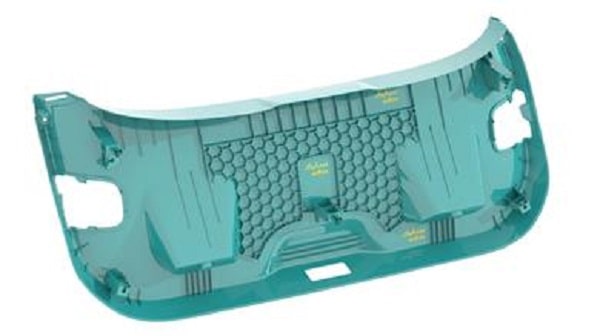
-Crude oil: economic fallout outweighing tight supply
Global stocks and commodity market slumped on Jul 5. Crude oil tumbled, euro sank, while US dollar spiked. It seemed that the rout on Tuesday began in Europe, rippling through exchange rate, stocks and commodity market, as the market took fright, concerns about economic downturn exacerbated and risk aversion soared.
In terms of crude oil, its supply and demand fundamentals are little changed recently, while the supply even tends to be tighter as production from Libya, Nigeria, Ecuador and Norway is slashed. Injection-moulding-PP – Chemical Recycling
OPEC+ announces to increase production, but the spare capacity is limited. Iranian nuclear negotiation slips into stalemate. However, crude oil price is barely boosted by those supportive factors. The reason behind that is crude oil market sentiment is hit by expectation of economic downturn, which outweighs the uncertainty on supply side.
It is forecast that weaker macro economic expectation could become a risk to the market in the latter half of 2022. When it becomes dominant, the uncertainty for crude oil would further increase. Currently, oil market is in the so-called bull-bear switching stage. In the background of economic recession expectation and tighter liquidity, the advancing momentum for risk assets tapers off gradually. Though concerns about crude oil supply shortage earlier and anticipation of increasing demand in driving season counteracts some risk, crude oil is weighed, as demand expectation changes with economic data refreshing new lows recently and EIA data showing unexpected rise in gasoline and refined oil stocks.
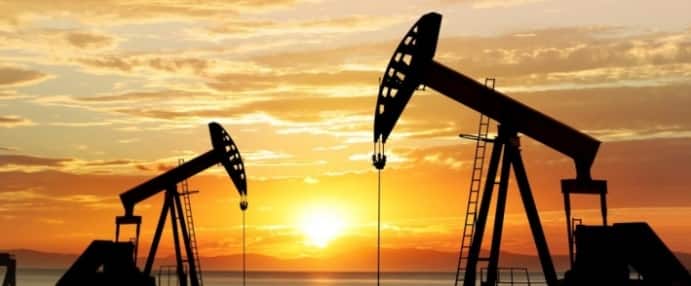
-Europe chems sentiment starts to sag despite stagnant high prices
Manufacturing activity in Europe has started to stall, according to the latest data, but this does not mean prices are guaranteed to drop in the coming months.
Although producers have been able to pass down costs so far, the tide may be turning, as expectations hit their lowest point since October 2020 because of the wider macroeconomic picture. Injection-moulding-PP – Chemical Recycling
Not only will the chemicals sector be impacted by any change in conditions, but as market feeding into many key downstream manufacturing industries, could indicate where the wider economy may be heading.
ECONOMIC EXPANSION CONTINUES
The slowdown was recorded in the latest purchasing managers’ index (PMI) data, which fell to a 16-month low at 52.0 points in June from 54.8 points, a fractional slowdown from the 52.1-point flash reading.
The composite eurozone output index data from S&P Global indicated that despite the slower pace of growth, the economy continued growing as it has every month since March 2021.
Eurozone flash PMI indices
(below 50.0 points = contraction) June May Trend
Composite 52.0 54.8 16-month low
Services 53.0 56.1 5-month low
Prices also continued rising, although as inflation eased from March’s peak, leading to charges rising at a slower pace.
Companies in the eurozone continued to face capacity pressures in June to meet outstanding business, and collapsing demand led to the slowest backlog accumulation since March 2021.
This in turn led to an increase in new job creation for the 17th successive month, albeit at the slowest pace since December. Injection-moulding-PP – Chemical Recycling
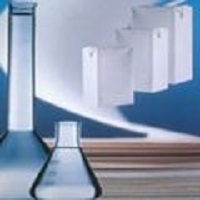
Injection-moulding-PP – Chemical Recycling
